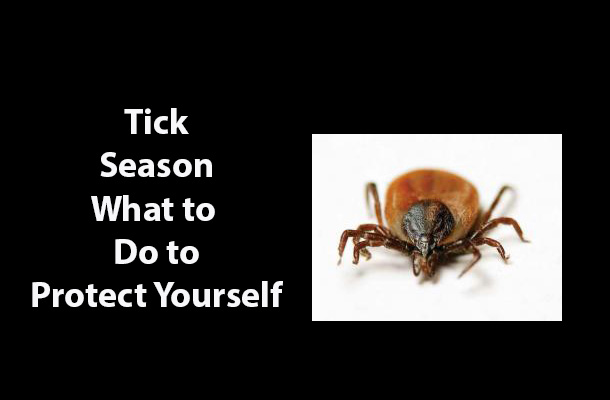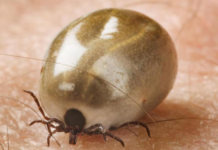
Protect you and your family from ticks
THUNDER BAY – Spring brings the start of the tick season. The Thunder Bay District Health Unit reports, ”
Most ticks in the Thunder Bay District are wood ticks, but the reported number of deer ticks is growing. While wood ticks are harmless, deer ticks have the potential to carry the bacteria that causes Lyme disease. Due to the small number of deer ticks in the District, the risk of contracting Lyme disease is low. However, the Health Unit recommends taking safety measures to prevent tick bites.
Click on the links below learn more about ticks and Lyme disease:
- What is the difference between a wood tick and a deer tick?
- How can I remove a tick and what do I do with it?
- How can I protect myself against ticks and Lyme disease?
- What is Lyme disease and how is it spread to humans?
- What are the symptoms of Lyme disease and how is it treated?
- Is there a BROCHURE I can download?
- Is there a POSTER I can download?
- Who can I call if I have questions?
- Are there reliable websites I can visit?
Top Ten Tick Tips
10. Ticks crawl up
Ticks don’t jump, fly, or drop from trees onto your head and back. If you find one attached there, it most likely latched onto your foot or leg and crawled up over your entire body.
9. All ticks (including deer ticks) come in small, medium and large sizes
8. Ticks can be active even in the winter That’s right! Deer Ticks in particular are not killed by freezing temperatures, and will be active any winter day that the ground is not snow-covered or frozen.
7. Ticks carry disease-causing microbes: Tick-transmitted infections are more common these days than in past decades. With explosive increases in deer populations, extending even into semi-urban areas in the eastern and western U.S., the trend is for increasing abundance and geographic spread of deer ticks and Lone Star ticks; and scientists are finding an ever-increasing list of disease-causing microbes transmitted by these ticks: Lyme disease bacteria, Babesia protozoa, Anaplasma, Ehrlichia, and other rickettsia, even encephalitis-causing viruses, and possibly Bartonella bacteria. Back in the day, tick bites were more of an annoyance but now a bite is much more likely to make you sick.
6. Only deer ticks transmit Lyme disease bacteria: The only way to get Lyme disease is by being bitten by a deer tick or one of its “cousins” found around the world.
5. For most tick-borne diseases, you have at least 24 hours to find and remove a feeding tick before it transmits an infection: Even a quick daily tick check at bath or shower time can be helpful in finding and removing attached ticks before they can transmit an infection. Lyme disease bacteria take at least 24 hours to invade the tick’s saliva.
4. Deer tick nymphs look like a poppy seed on your skin: And with about 1 out of 4 nymphal deer ticks carrying the Lyme disease spirochete and other nasty germs in the northeastern, mid-Atlantic, and upper mid-western U.S., it’s important to know what you’re really looking for. They’re easy to miss, their bites are generally painless, and they have a habit of climbing up (under clothing) and biting in hard-to-see places.
3. The easiest and safest way to remove a tick is with a pointy tweezer
Using really pointy tweezers, it’s possible to grab even the poppy-seed sized nymphs right down next to the skin. The next step is to simply pull the tick out like a splinter.
2. Clothing with built-in tick repellent is best for preventing tick bites
An easy way to avoid tick bites and disease is to wear clothing (shoes, socks, shorts or pants, and shirt) with Insect Shield® tick repellent built-in. http://www.insectshield.com/basics
1. Tick bites and tick-borne diseases are completely preventable
There’s really only one way you get a tick-transmitted disease and that’s from a tick bite. Reducing tick abundance in your yard, wearing tick repellent clothing every day, treating pets every month and getting into a habit of doing a quick body scan are all great actions for preventing tick bites.




